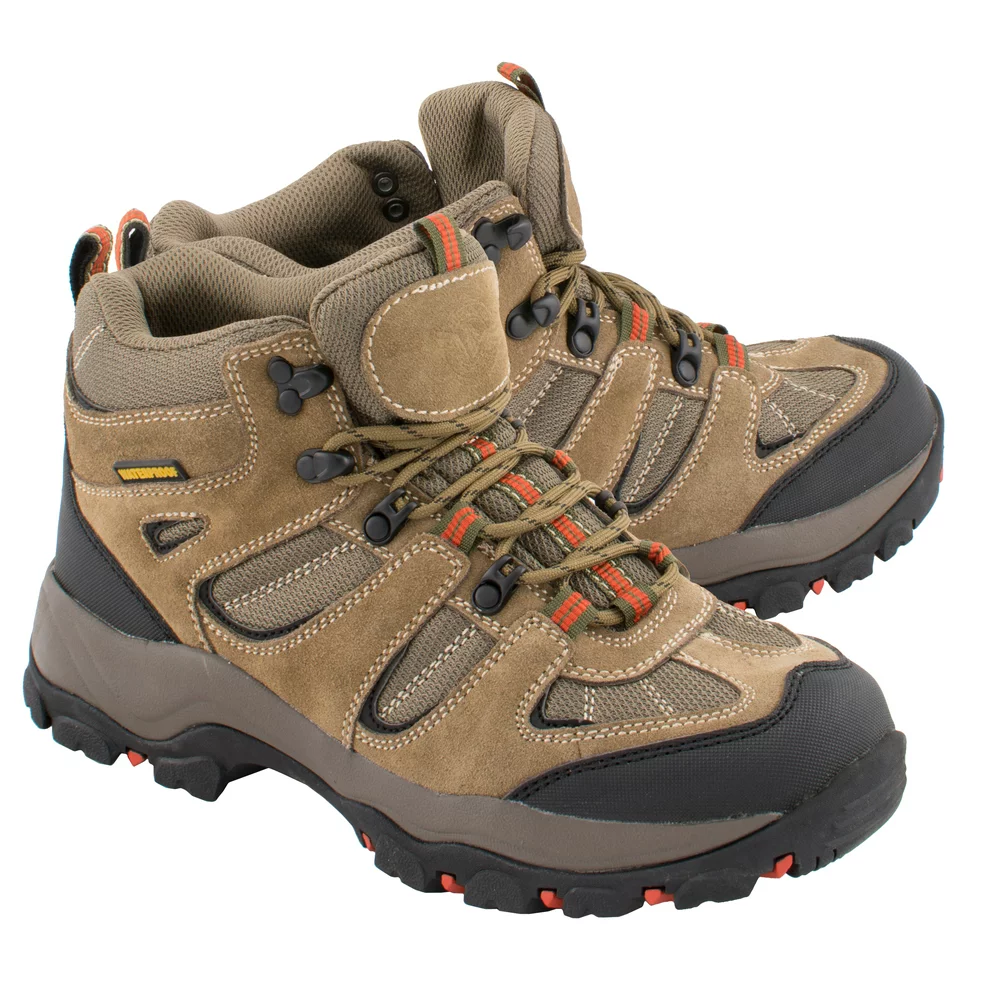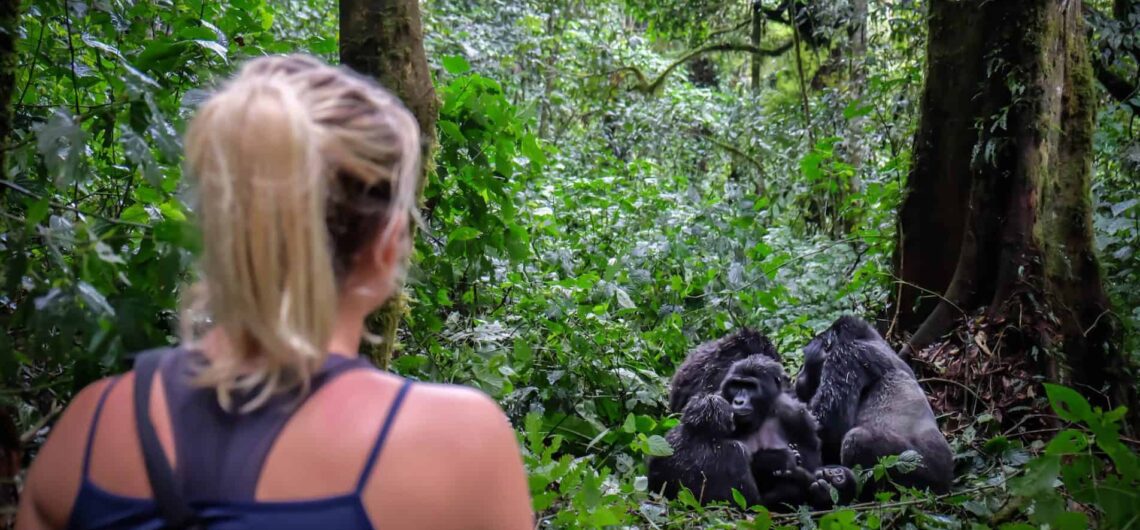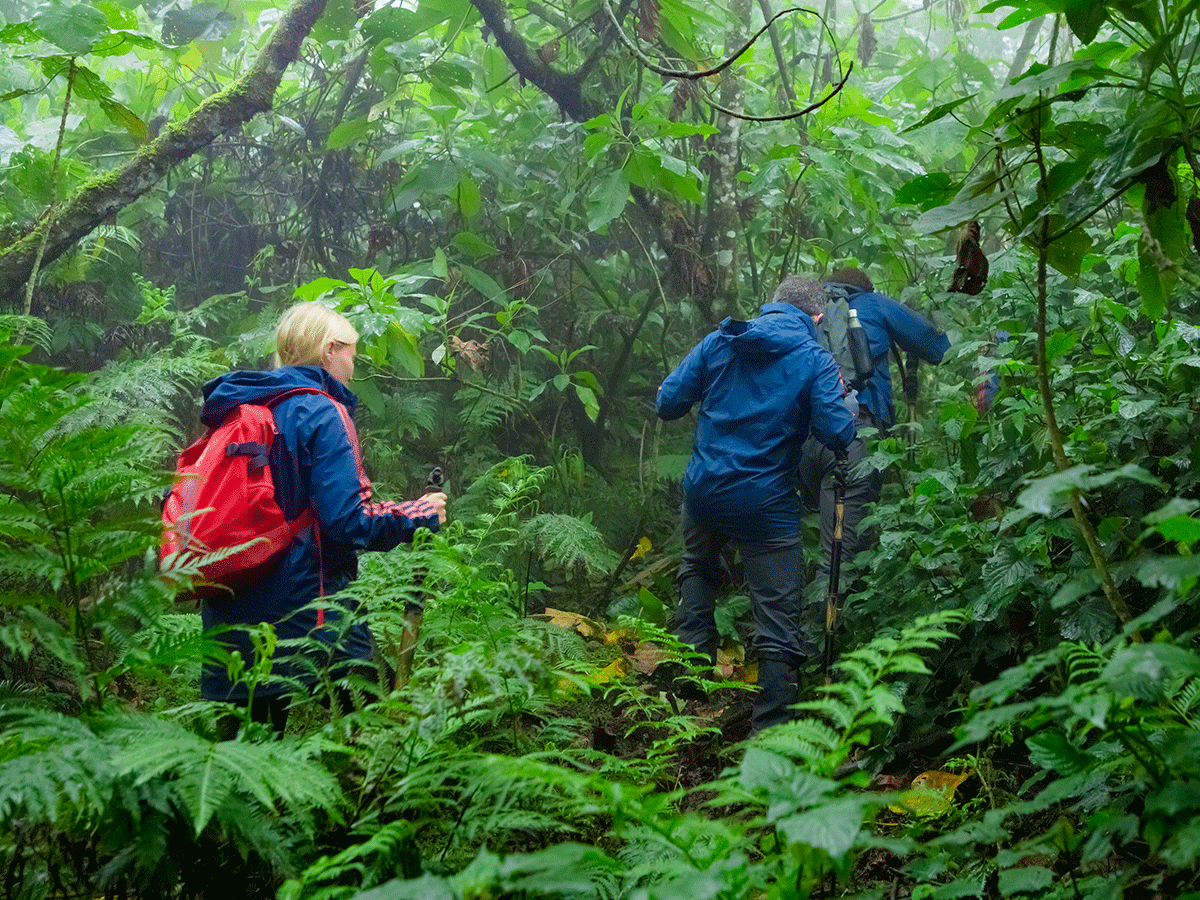Rules and Requirements for Gorilla Trekking: There are several gorilla trekking regulations that are intended to safeguard both the tourists and the animals. Mountain gorilla tracking is a thrilling sport, but in order to make it even more memorable, one must be well-prepared and in good physical condition. We advise participants to adhere to the park Rangers’ guidance and directions throughout the program. There are only 1000 wild mountain gorillas left today. They need to be protected from diseases and other things that could risk their survival because they are an endangered species.
Before setting out on a gorilla tracking mission, travelers should consider the following items, which we have listed. The guidelines were created to prevent unduly alarming the primates while also minimizing the spread of sickness from humans to gorillas. Mountain gorillas have a poorer immune system than humans, making them susceptible to human illnesses.
It’s also crucial to remember that even though the gorillas have become acclimated, they are still wild animals and do not fully trust people. When threatened, they will defend their young to the death and are fiercely devoted to them. Also, it’s crucial to spend only a brief amount of time with the primates so that they have time to flourish and interact with one another.
Visitors are typically informed of these guidelines prior to the real gorilla walk during the briefing. You would aid in the general conservation of the primates if you adhered to and respected the gorilla trekking laws and restrictions. You might find the gorilla trekking packing list or our essay on gorilla trekking for individuals with impairments interesting before we get to the guidelines.
Rules and Requirements for Gorilla Trekking
The laws and regulations for gorilla trekking state that: – You must be 15 years of age or older to obtain a gorilla tracking permit. Due to the fact that children frequently carry the flu, colds, chicken pox, and mumps, which could infect the gorillas, the age restriction for gorilla trekking is imposed at 15.
To enter Uganda, Rwanda, or the Democratic Republic of the Congo, you must possess a yellow fever vaccination. A visa may also be required for entry into the borders of the several countries that track gorillas. After the briefing and before entering the forest, the park authorities will need a copy of your passport to verify your identity and make sure you are not prohibited from going gorilla trekking. A gorilla troop may only have eight visitors each day. This lessens interruptions to the gorilla group’s behavior as well as the likelihood of illness transmission.
In order to track gorillas, one must go a great distance in pursuit of the gorilla families. It frequently includes navigating muddy routes and ascending steep hills. For the optimal experience, you should be in good physical and mental health. The closest gorilla families will be allotted to senior tourists. If they choose, the elderly can pay a porter to assist them in being carried up to the group.
When sick with communicable diseases, it is impossible to trace mountain gorillas. If the Rangers believe the gorillas may be contaminated, they have the right to prevent you from continuing with the group. If you don’t feel well or think you have a contagious illness, offer to stay behind. Once you are cleared and in excellent health, you will either receive a refund of the money you spent on the permit or be offered another chance.
Gorillas are susceptible to human illnesses like the flu, cough, and diarrhea. Gorillas are very negatively impacted by coughing. If you must sneeze or cough, turn away from the gorillas and cover your mouth and nose. Keep in mind that you can be concealing bacteria or an ailment. While you go on your walk, you must also make sure your hands are clean.
Pay close attention to what the Rangers say and obey them. Talk quietly when hiking to avoid missing opportunities to see birds and other woodland wildlife. While around the primates, keep your voice low. If you must speak, speak quietly. The gorillas may become frightened by loud noises, particularly if they have just finished the habituation process. Do not scream and warn the gorillas if you are bitten by a bug or a safari ant. They might leave before the hour is up, which would cut down on the time spent with them. The rangers will provide a solution if you let them know about your situation.
Maintain the park tidy and clear of trash that could contaminate the gorillas with sickness. It is forbidden for visitors to leave behind used tissues, handkerchiefs, or cans. The things could pose problems if the primates swallow them. If you need to use the restroom, tell the guide right away. They will dig a hole for you, which you must then cover to prevent sickness from getting to the gorillas.
Never remove foliage to gain a better look at the gorillas. This might frighten the primates. If it’s feasible and required, let the rangers handle any clearing. Eat, drink, and smoke are all prohibited while mountain gorillas are nearby. They might come up to you out of curiosity and possibly grab a snack. The gorillas could contract illnesses from leftover food.
To lessen the chance of spreading infections to humans, keep a distance of at least 15 feet from the critically endangered mountain gorillas. Tourists should observe the gorillas in groups rather than encircling them. The gorillas need to have enough room to walk about without feeling frightened or encircled. Maintain at least 15 feet between you and any gorillas that decide to approach, especially.
Reverse direction gently. If going backwards isn’t an option, the only choice is to stay still. Children will try to investigate you since they are so curious. You should secure your belongings and bag so that they don’t attract the curious children’s attention. Apart from limiting the spread of disease, keeping a safe distance will stop the primates from growing accustomed to people. Also, it will stop the primates from behaving unnaturally friendly or even hostile toward groups that follow you.
When a mountain gorilla charges, which happens infrequently, slowly stoop down. Allow the gorilla to leave on its own and don’t run. When a silverback starts hammering his chest to show dominance, the Rangers will be on guard. In such situations, they are trained to soothe tourists and prevent anyone from escaping. Staying put is preferable to charging, which can be frightening and menacing.
Keep your composure and avoid making unexpected movements. Avoid looking straight at the gorillas since they might interpret that as aggression. With gorillas, your body language is really important. Avoid raising your hands or arms because doing so could be interpreted as an aggressive gesture. Aggression can also be interpreted as standing taller than them and then glaring at them.
You will be informed by the Rangers when it is okay to begin shooting pictures. Whenever you’re photographing mountain gorillas, be composed and move slowly. Avoid agitating the gorillas to the point that they charge at you by not using your flash.
Even when mountain gorillas are scrutinizing you, avoid trying to touch them. They might interpret it as aggression.
Wearing vibrant colors could catch the gorillas’ interest. Additionally prohibited while visiting the gorillas are sunglasses. They might approach you for more information because of their reflection in the glass.
 Put on a decent pair of durable hiking shoes for the greatest gorilla trekking experience. The footwear ought to be perfect for ascending muddy, steep slopes. Bring adequate water and a packed lunch from your hotel when you travel. You are encouraged to bring rain jacket and other clothes because rain is a typical occurrence in gorilla parks, so you should be prepared.
Put on a decent pair of durable hiking shoes for the greatest gorilla trekking experience. The footwear ought to be perfect for ascending muddy, steep slopes. Bring adequate water and a packed lunch from your hotel when you travel. You are encouraged to bring rain jacket and other clothes because rain is a typical occurrence in gorilla parks, so you should be prepared.
Gorilla trekking takes place in regions with dense flora and forests. Tree branches and jagged grass could cut your skin. It would be great if you wore long pants and shirts. It’s also vital to remember that there are a lot of insects in tropical forests. Investing in a quality bug repellent is the best method to keep them under control. Take pictures of the woodland animals by moving with a good camera and a pair of binoculars.



Comments